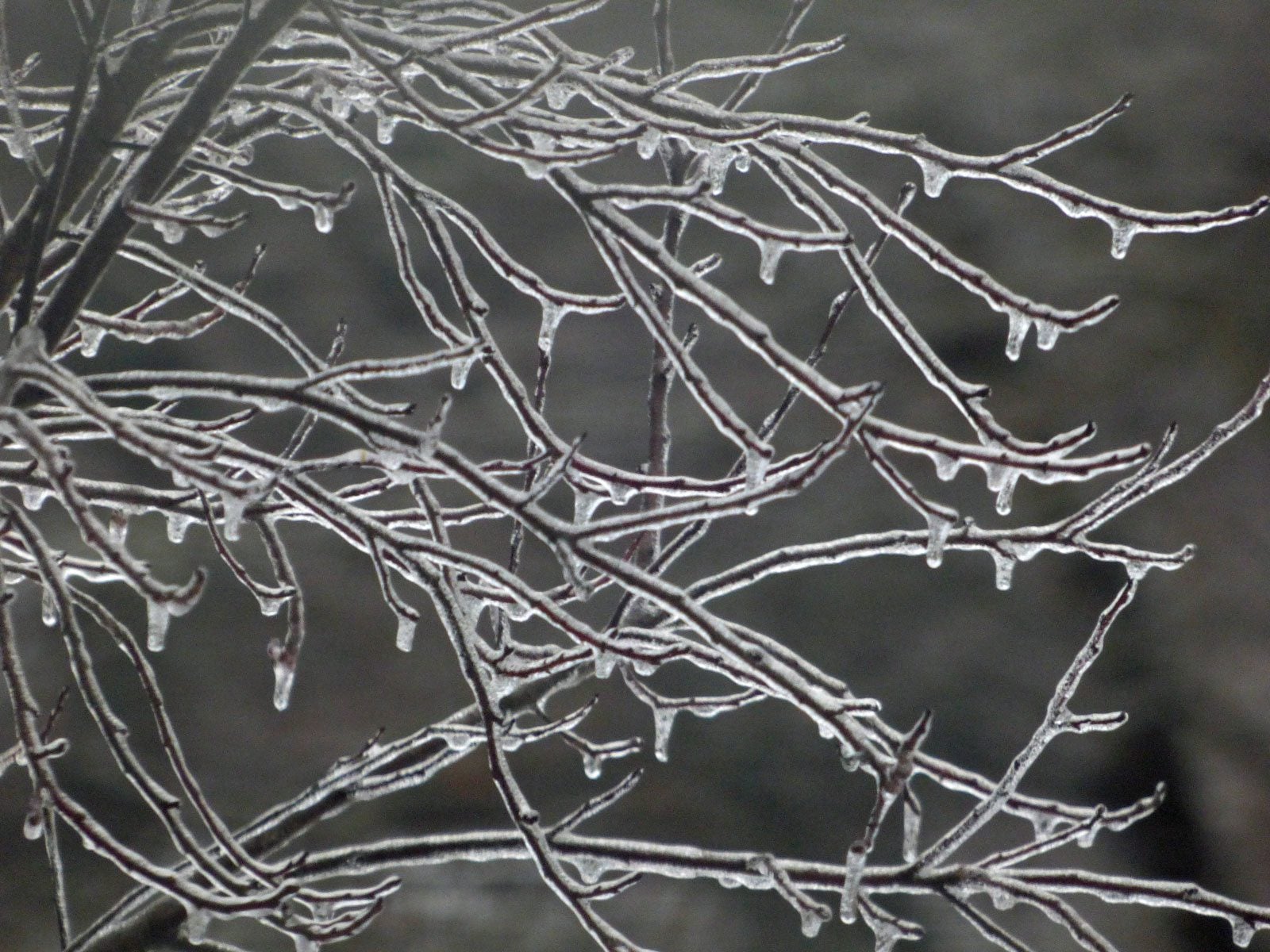Dealing With Ice On Plants: What To Do For Ice Covered Trees And Shrubs


On an early spring night, I was sitting in my home chatting with a neighbor who had stopped by. For several weeks, our Wisconsin weather had fluctuated dramatically between snow storms, heavy rains, extremely cold temperatures, and ice storms. That night we were experiencing a pretty nasty ice storm and my thoughtful neighbor had salted my sidewalk and driveway as well as his own, so I invited him in to warm up with a cup of hot chocolate. Suddenly, there was a loud cracking, then crashing noise outside. As we opened my door to investigate, we realized we couldn't open the door wide enough to get out because a very large limb of the old silver maple in my front yard had come down just inches from my door and home. I was all too aware that if these tree branches had fallen in just a slightly different direction, it would have crashed right through my son’s bedroom upstairs. We had gotten very lucky, ice damage on large trees can cause severe damage to homes, cars, and power lines. It can also damage plants. Read on to learn more about caring for plants after an ice storm.
Ice Covered Trees and Shrubs
Ice covered trees and shrubs is just a normal part of winter for many of us in cooler climates. When winter temperatures stay consistently cold, ice on plants is not usually something to worry about. Most ice damage to trees and shrubs occurs when there is extreme fluctuations in the weather. Repetitive freezing and thawing often cause frost cracks in the trunks of trees. Frost cracks in maple trees are quite common and usually do not harm the tree. These cracks and wounds usually heal on their own. Using pruning sealer, paint, or tar to cover wounds on trees actually just slows down the trees natural healing process and is not recommended. Quick growing, softer wood trees like elm, birch, poplar, silver maple, and willows can be damaged by the extra weight of ice after an ice storm. Trees that have two central leaders that join in a V-shaped crotch, oftentimes will split down the middle from heavy snow, ice, or wind from winter storms. When shopping for a new tree, try to purchase medium hardwood trees with one single central leader growing up from the middle. Juniper, arborvitae, yews, and other dense shrubs can also be damaged by ice storms. Many times, heavy ice or snow will split dense shrubs down the middle, leaving them looking bare in the middle with growth in a donut shape around the shrubs. Tall arborvitaes can arch right over towards the ground from heavy ice, and even snap in half from the weight.
Dealing With Ice on Plants
After an ice storm, it's a good idea to inspect your trees and shrubs for damage. If you see damage, arborists suggest a 50/50 rule. If less than 50% of the tree or shrub is damaged, you may be able to save the plant. If more than 50% is damaged, it’s probably time to plan for the plant’s removal and research sturdier varieties as a replacement. If a tree damaged by ice is near any power lines, contact your utility company immediately to deal with it. If a large, older tree is damaged, it is best to get a certified arborist to do any corrective pruning and repairs. If ice damaged trees or shrubs are small, you can do corrective pruning yourself. Always use clean, sharp pruners to cut damaged branches off as close to the base as possible. When pruning, never remove more than 1/3 of the tree or shrub branches. Prevention is always the best course of action. Try not to purchase weak, softwood trees and shrubs. In the fall, use pantyhose to tie shrub branches up to each other to prevent the shrubs from splitting. Whenever possible, brush off large deposits of snow and ice from smaller trees and shrubs. Shaking off tree branches covered in icicles can cause personal injury though, so use caution.
Gardening tips, videos, info and more delivered right to your inbox!
Sign up for the Gardening Know How newsletter today and receive a free copy of our e-book "How to Grow Delicious Tomatoes".
-
 How To Make A Bouquet Garni Or Herb Bundle For Cooking
How To Make A Bouquet Garni Or Herb Bundle For CookingIf you’re a great cook, you may have made an herb bundle before. If this is a new idea, learn how to add sparkle and interest to your dish with a bouquet garni.
By Amy Grant
-
 ‘Coral Charm’ Peony Care For Sublime Semi-Double Peonies With Lush Salmon Pink Flowers
‘Coral Charm’ Peony Care For Sublime Semi-Double Peonies With Lush Salmon Pink FlowersPeonies are known for their soft baby pink or magenta tones, but if plushy coral blooms are your thing, here’s our guide to the ultimate ‘Coral Charm’ peony care
By Tonya Barnett